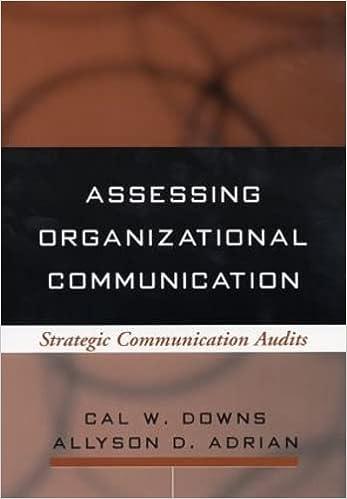(18-19 SES 1 ASAD) PLEASE SOLVE THE 1 -> 5 FOR ME THANK YOU ^^


NE RIEN INSCRIRE DANS CE CADRE 5. A country would like to keep its price competitiveness in case of huge capital inflows. Which side of the Mundell triangle should the country choose? a. Monetary union, fixed exchange rate, free capital mobility b. Autonomous monetary policy, flexible exchange rate, free capital mobility c. Autonomous monetary policy, fixed exchange rate, perfect capital control d. Autonomous monetary policy, fixed exchange rate, free capital mobility c. Perfect capital control, flexible exchange rate, autonomous monetary policy Exercise : ASAD (6 points) Consider a closed economy characterized by the following set of equations Consumption: C = 0.88 +3; Investment: 1 = -10i+1; Real demand for money: M/P = 0.2Y 101 ; Nominal money supply: M$ = 100; The price determination by firms (PS): P = W(1 + v); The wage determination (WS): W = P(0.5 -0.02u); u is the unemployment rate equal to 1-N with N volume of employment; Production YEN 1. (0.5pt) The parameter v could be defined as a. The purchasing power of the firm b. The sensitivity of wage to labor market conditions c. The labor production cost d. A composite term allowing to consider production costs not driven by labor e. A composite term allowing to capture how price is sensitive to labor market condition 2. (1.5pt) The AD equation is given by a. Y = 4-101 0.2 NE RIEN INSCRIRE DANS CE CADRE 4-10P b. Y= 0.2 2- c. i= 10 2+ d. Y = 0.2 e. Y 0.2 3. (1pt) The short run AS equation is given by: a. P = P.(0.5 -0.020) (1 + v) b. P = P.(0.5-0.02(1-Y)) (1+v) c. P = Y(1 + v) d. P = P(0.48 +0.02Y)(1+ v) + 24 P.(1+v)0.02 P e. 4. (2pt) When v =0.2 and the wage setters have perfect information to form their expectations, the general equilibrium is : a. Y = 17.5; P = 0.05 b. Y = 17.5; P = 33.33 c. Y = 65.67; P = 4.49 d. Y = 65.67; P = 78.80 e. Y = 17.5; P = 1 5. (1pt) When the value of v goes down : a. The long term equilibrium is not affected and the short run output goes down b. The long term equilibrium is not affected and the short run output goes up c. Both the short and the long run output go up d. The natural level of output goes down and the short run output is unaffected e. The natural level of output goes up and the short run output is unaffected 6 NE RIEN INSCRIRE DANS CE CADRE 5. A country would like to keep its price competitiveness in case of huge capital inflows. Which side of the Mundell triangle should the country choose? a. Monetary union, fixed exchange rate, free capital mobility b. Autonomous monetary policy, flexible exchange rate, free capital mobility c. Autonomous monetary policy, fixed exchange rate, perfect capital control d. Autonomous monetary policy, fixed exchange rate, free capital mobility c. Perfect capital control, flexible exchange rate, autonomous monetary policy Exercise : ASAD (6 points) Consider a closed economy characterized by the following set of equations Consumption: C = 0.88 +3; Investment: 1 = -10i+1; Real demand for money: M/P = 0.2Y 101 ; Nominal money supply: M$ = 100; The price determination by firms (PS): P = W(1 + v); The wage determination (WS): W = P(0.5 -0.02u); u is the unemployment rate equal to 1-N with N volume of employment; Production YEN 1. (0.5pt) The parameter v could be defined as a. The purchasing power of the firm b. The sensitivity of wage to labor market conditions c. The labor production cost d. A composite term allowing to consider production costs not driven by labor e. A composite term allowing to capture how price is sensitive to labor market condition 2. (1.5pt) The AD equation is given by a. Y = 4-101 0.2 NE RIEN INSCRIRE DANS CE CADRE 4-10P b. Y= 0.2 2- c. i= 10 2+ d. Y = 0.2 e. Y 0.2 3. (1pt) The short run AS equation is given by: a. P = P.(0.5 -0.020) (1 + v) b. P = P.(0.5-0.02(1-Y)) (1+v) c. P = Y(1 + v) d. P = P(0.48 +0.02Y)(1+ v) + 24 P.(1+v)0.02 P e. 4. (2pt) When v =0.2 and the wage setters have perfect information to form their expectations, the general equilibrium is : a. Y = 17.5; P = 0.05 b. Y = 17.5; P = 33.33 c. Y = 65.67; P = 4.49 d. Y = 65.67; P = 78.80 e. Y = 17.5; P = 1 5. (1pt) When the value of v goes down : a. The long term equilibrium is not affected and the short run output goes down b. The long term equilibrium is not affected and the short run output goes up c. Both the short and the long run output go up d. The natural level of output goes down and the short run output is unaffected e. The natural level of output goes up and the short run output is unaffected 6








